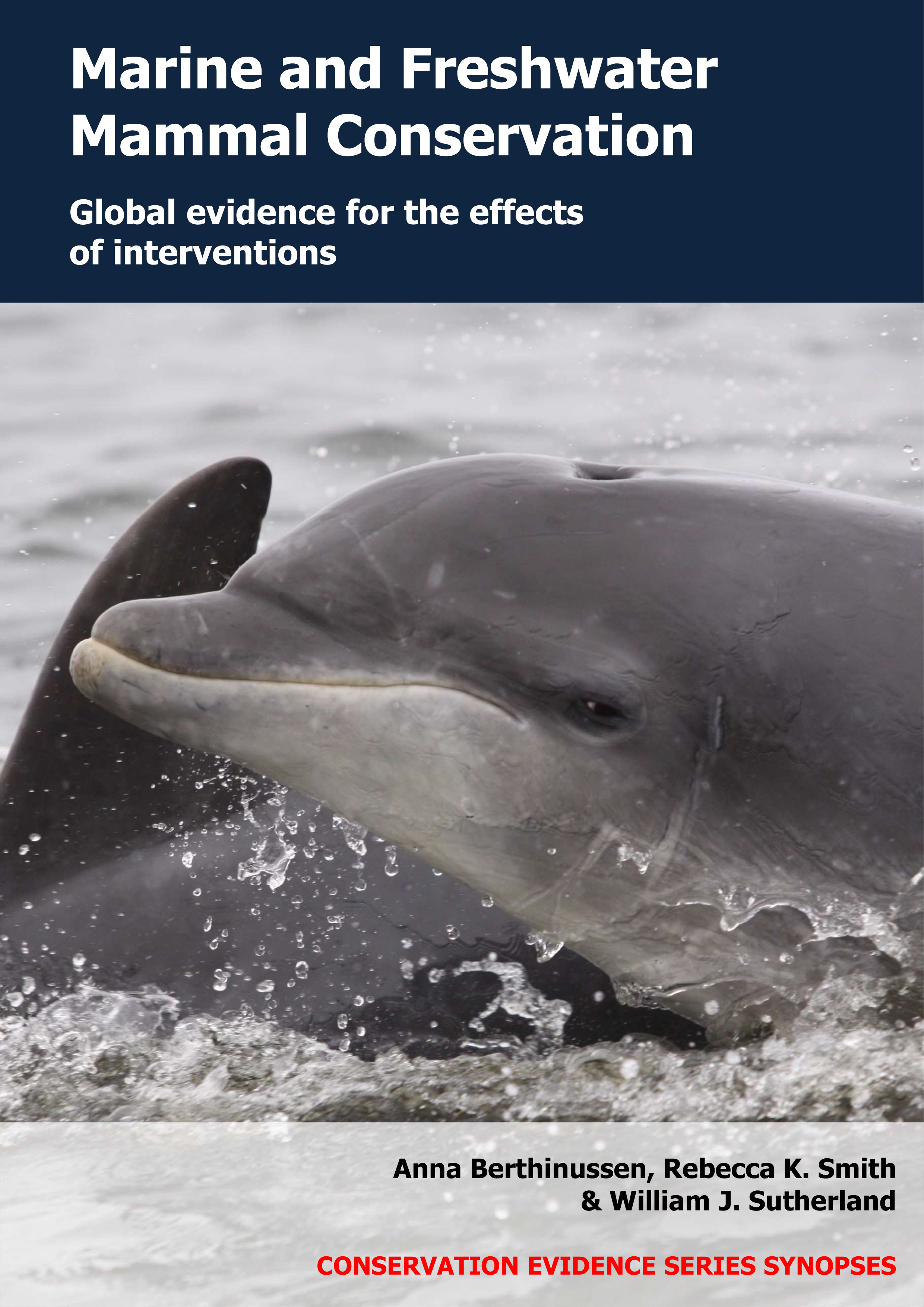Increase visual detectability of fishing gear for mammals
-
Overall effectiveness category Likely to be beneficial
-
Number of studies: 2
View assessment score
Hide assessment score
How is the evidence assessed?
-
Effectiveness
55% -
Certainty
45% -
Harms
5%
Study locations
Supporting evidence from individual studies
A study in 2010 of a pelagic area in the Gulf of St. Lawrence, Canada (Kot et al. 2012) reported that white ropes were approached more slowly by minke whales Balaenoptera acutorostrata than ropes of other colours, and whales changed their bearing more when approaching black ropes. Results are not based on assessments of statistical significance. Minke whales had greater reductions in swimming speed when approaching white ropes (average -1 m/s) than black, yellow, orange, green or blue ropes (combined average -0.5 m/s). Minke whales changed their bearing more when approaching black ropes (average 91°) than white, yellow, orange, green or blue ropes (combined average 55°). In June–August 2010, experimental trials were carried out with white, black, yellow, orange, green and blue polypropylene ropes (1.5 cm diameter) suspended in water 8–14 m deep. During each trial, 5–10 ropes of the same colour were spaced 15 m apart perpendicular to the shore. Ropes were attached to a buoy and moored to the sea floor. Observers in a boat anchored 100 m away recorded the speed and bearing of 7–12 individual whales passing the ropes of each colour.
Study and other actions testedA study in 2013 at a pelagic site in Cape Cod Bay, USA (Kraus et al. 2014) found that simulated ropes painted red or orange were detected by North Atlantic right whales Eubalaena glacialis at greater distances than ropes painted green but not black, and more whales collided with green ropes than the other three rope colours. Changes in the behaviour of right whales approaching the ropes occurred at greater average distances from red ropes (3.9 m) and orange ropes (4.1 m) than green ropes (1.9 m). The difference was not significant between black ropes (3 m) and the other three rope colours. More whales collided with green ropes (total seven whales) than the other three rope colours (total 2–3 whales), although the difference was not tested for statistical significance. A row of four simulated vertical ropes (spaced 25 m apart) were placed 75–100 m in front of whales travelling near the water surface. Ropes consisted of 10-foot sections of rigid PVC pipe (1-inch diameter) painted red, orange, green or black and suspended between a weight and a buoy. Whales were observed from a stationary boat. Changes in the behaviour of whales (including respiration, mouth closures, submergence times, and turning angles) within 10 m of the ropes were recorded by video 52 times during nine days in 2013. Distances were measured with a laser range finder.
Study and other actions tested
Where has this evidence come from?
List of journals searched by synopsis
All the journals searched for all synopses
This Action forms part of the Action Synopsis:
Marine and Freshwater Mammal Conservation
Marine and Freshwater Mammal Conservation - Published 2021
Marine and Freshwater Mammal Synopsis





)_2023.JPG)














